- Clone
- MHN1-519 (See other available formats)
- Regulatory Status
- RUO
- Other Names
- Neurogenic locus notch homolog protein 1 (Notch 1), Translocation-associated notch protein (TAN-1), Motch A, mT14, p300
- Isotype
- Mouse IgG1, κ
- Ave. Rating
- Submit a Review
- Product Citations
- 4 publications
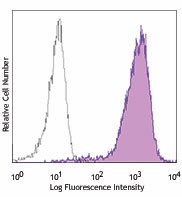
| Cat # | Size | Price | Save |
|---|---|---|---|
| 352107 | 25 tests | ¥24,860 | |
| 352108 | 100 tests | ¥58,740 |
Notch 1, also known as TAN-1, is a transmembrane protein. Its extracellular domain contains 29 epidermal growth factor-like (EGF) repeats and 3 Lin/Notch Glp (LNR) repeats, the intracellular domain contains 5 CDC10/Ankryn repeats (ANK), 1 proline, glutamate, serine, threonine-rich (PEST) motif, and 1 regulation of amino acid metabolism 23 (RAM23) domain. Notch 1 regulates the development, differentiation, and survival of a broad spectrum of cell lineages. It is involved in myogenesis, neurogenesis, gliogenesis, and lymphocyte development, resulting in Notch 1 expression in many organs such as brain, lung, thymus, spleen, bone marrow, spinal cord, eyes, mammary gland, liver, intestine, kidney, and heart. Notch 1 ligands are Jagged 1, Jagged 2, Delta 1, and Delta 4. Upon ligand binding, the intracellular domain of Notch 1 is cleaved and translocates to the cell nucleus where it forms a transcriptional activator complex with RBP-J κ.
Product DetailsProduct Details
- Verified Reactivity
- Human
- Antibody Type
- Monoclonal
- Host Species
- Mouse
- Immunogen
- Recombinant human Notch1-Fc fusion protein
- Formulation
- Phosphate-buffered solution, pH 7.2, containing 0.09% sodium azide and BSA (origin USA)
- Preparation
- The antibody was purified by affinity chromatography and conjugated with APC under optimal conditions.
- Concentration
- Lot-specific (to obtain lot-specific concentration and expiration, please enter the lot number in our Certificate of Analysis online tool.)
- Storage & Handling
- The antibody solution should be stored undiluted between 2°C and 8°C, and protected from prolonged exposure to light. Do not freeze.
- Application
-
FC - Quality tested
- Recommended Usage
-
Each lot of this antibody is quality control tested by immunofluorescent staining with flow cytometric analysis. For flow cytometric staining, the suggested use of this reagent is 5 µl per million cells in 100 µl staining volume or 5 µl per 100 µl of whole blood.
- Excitation Laser
-
Red Laser (633 nm)
- Application Notes
-
Additional reported applications (for the relevant formats) include: blocking Notch 1 mediated binding to DLL4 in human cord blood CD34+ cells1.
-
Application References
(PubMed link indicates BioLegend citation) -
- Haraguchi K, et al. 2009. J. Immunol. 182:6168. (Block)
- Yamanda S, et al. 2009. Blood 113:3631. (FC)
- Guy CS. et al. 2013. Nat Immunol. 14:262. PubMed
- Product Citations
-
- RRID
-
AB_10897100 (BioLegend Cat. No. 352107)
AB_10900063 (BioLegend Cat. No. 352108)
Antigen Details
- Structure
- Transmembrane protein. The extracellular domain contains 29 EGF repeats and 3 LNR repeats. The intracellular domain contains 5 CDC10/ANK, 1 PEST motif, and 1 RAM23 domain.
- Distribution
-
Highly expressed in the brain, lung, and thymus. Lower levels of expression in spleen, bone marrow, spinal cord, eyes, mammary gland, liver, intestine, kidney, and heart.
- Function
- Regulates development, differentiation, and survival of a broad spectrum of cell lineages. Involved in myogenesis, neurogenesis, gliogenesis, and lymphocyte development.
- Interaction
-
RBP-J κ.
- Ligand/Receptor
- Jagged 1, Jagged 2, Delta 1, Delta 4.
- Cell Type
- B cells, Neural Stem Cells, Thymocytes
- Biology Area
- Cell Biology, Immunology, Innate Immunity, Neuroscience, Neuroscience Cell Markers, Stem Cells, Synaptic Biology
- Molecular Family
- Postsynaptic proteins
- Antigen References
-
1. Vicente R, et al. 2010. Semin. Immunol. 22:270.
2. Zhao WL. 2010. Leukemia 24:13.
3. Sanda T, et al. 2010. Blood 115:1735.
4. Zhou J, et al. 2009. Immunity 31:356. - Gene ID
- 4851 View all products for this Gene ID
- UniProt
- View information about Notch 1 on UniProt.org
Related FAQs
Other Formats
View All Notch 1 Reagents Request Custom Conjugation| Description | Clone | Applications |
|---|---|---|
| Purified anti-human Notch 1 | MHN1-519 | FC,Block |
| PE anti-human Notch 1 | MHN1-519 | FC |
| APC anti-human Notch 1 | MHN1-519 | FC |
| TotalSeq™-A0213 anti-human Notch 1 | MHN1-519 | PG |
| Ultra-LEAF™ Purified anti-human Notch 1 | MHN1-519 | FC,Block |
| TotalSeq™-C0213 anti-human Notch 1 | MHN1-519 | PG |
| TotalSeq™-B0213 anti-human Notch 1 | MHN1-519 | PG |
Customers Also Purchased
Compare Data Across All Formats
This data display is provided for general comparisons between formats.
Your actual data may vary due to variations in samples, target cells, instruments and their settings, staining conditions, and other factors.
If you need assistance with selecting the best format contact our expert technical support team.
-
Purified anti-human Notch 1
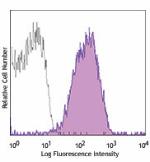
PHA-stimulated (3 days) human peripheral blood lymphocytes w... 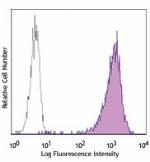
Human Notch 1 transfected CHO cells were stained with Notch ... -
PE anti-human Notch 1

PHA-stimulated (3 days) human peripheral blood lymphocytes w... 
Human Notch 1 transfected CHO cells were stained with Notch ... -
APC anti-human Notch 1

Human Notch 1 transfected CHO cells were stained with Notch ... -
TotalSeq™-A0213 anti-human Notch 1
-
Ultra-LEAF™ Purified anti-human Notch 1
-
TotalSeq™-C0213 anti-human Notch 1
-
TotalSeq™-B0213 anti-human Notch 1











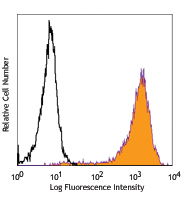
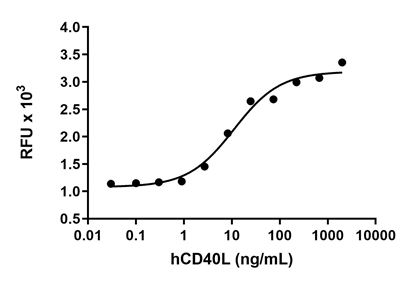
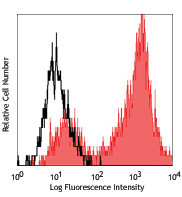
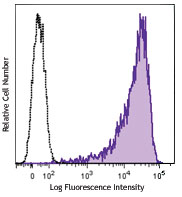







Follow Us